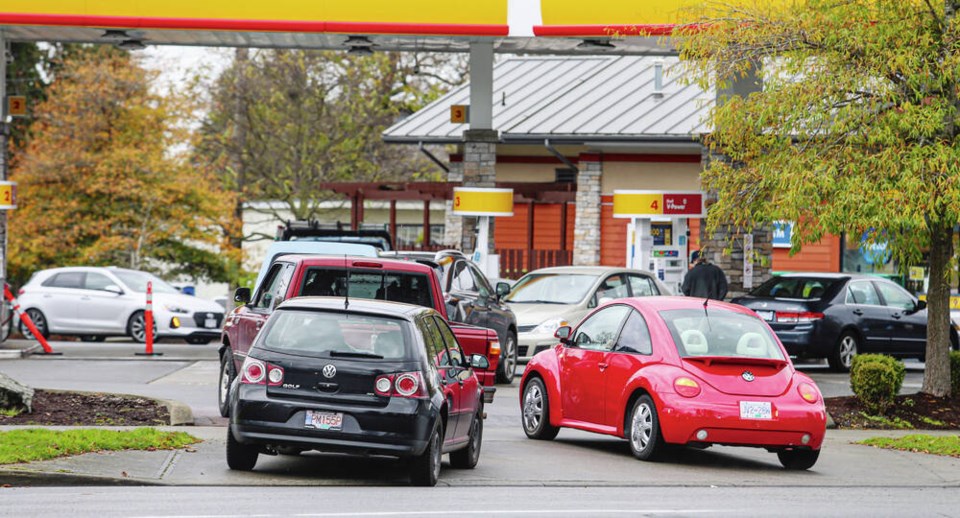How much fuel is flowing into the province will determine what happens to gas restrictions that are in place until Wednesday, says B.C. Transportation Minister Rob Fleming.
Fleming said an update on Monday will shed more light on next steps, as Environment Canada forecast more torrential rain over the weekend.
Drivers who aren’t operating essential vehicles are limited to purchasing 30 litres of fuel per trip to the gas station in the Lower Mainland, Sunshine Coast, Gulf Islands and Vancouver Island.
“We’re monitoring how much fuel we have in reserve, in terms of new supply that’s coming in,” said Fleming. “So quantity determines what restrictions may continue to apply or can be lifted.”
The minister wouldn’t say Friday whether gas rationing will need to continue past Dec. 1 as a result of reduced fuel flowing into the province in the wake of recent storms.
Fuel continues to be imported and “we’re confident that supplies will be maintained,” said Fleming.
“There’s a lot of supply chains that are open and there’s fuel that arrived already via barge from the western states and so I think an accounting of what is arriving and the Kinder Morgan situation will be provided in a fulsome update on Monday,” he said.
The Trans Mountain, which shut down its pipeline Nov. 14, reported Friday it has made “considerable progress towards a safe restart of the pipeline” in the face of continued weather and access challenges, and anticipates reopening at “reduced capacity” around Dec. 1.
“Once restarted, delivery of oil and refined products currently in the line will continue as they progress to their delivery points at either Kamloops, Sumas, or Burnaby,” said Trans Mountain.
“After initial start-up, a sustained effort will continue to return the system to its full capacity as soon as possible.”
Products are moving and grocery shelves and gas stations are being replenished, said Fleming, thanks to co-ordination and co-operation between governments, port authorities and the private sector.
Environment Canada is warning of two more storms ahead, one on the weekend and another Tuesday and Wednesday, with extreme rainfall that could worsen existing flooding or create new flooding around the province.
In an update on the state of repairs and emergency measures around flooded and washed-out highways and farms in the province, Fleming said the Malahat — washed out in parts during heavy rainfall on Nov. 14- 15 — will be monitored and inspected during the next few storms.
The minister said traffic on the Malahat, which reopened to two-way travel after closures in the wake of the last storm, is slower-moving, but added: “It should be. People need to drive to conditions.”
“The work that was done in the first week was critical to getting that reopened much more quickly than we originally anticipated,” said Fleming. Highway 19, which had a partial collapse — a sinkhole near Lantzville north of Nanaimo — is also working well, he said.
With the extreme rainfall forecast for Tuesday and Wednesday, Fleming urged people to stay home if they don’t need to travel. “If you’re required to drive, please make sure your vehicle has food, water, warm clothes, blankets and other emergency supplies,” he said.
Road crews and equipment are already on standby to respond if necessary, especially on Lower Mainland routes affected by the Nov. 15 storm.
Highways might be preemptively closed based on assessments closer to the storm date, said Fleming, adding those driving during the storms should be regularly checking DriveBC.ca.
ceharnett@timescolonist.com




